A Simplified Computational Strategy Focused on Resin Damage to Study Matrix Cracking of The Cross-Ply Laminates Under Uniaxial Tension Load
Abstract
1. Introduction
2. Experiment
2.1. SEM Tests of the Cross Section of the Transverse Plies
2.2. Uniaxial Tensile Test to Observe the Transverse Cracks
3. Computational Methodology
4. Results and Discussions
4.1. Experimental Results
4.1.1. SEM Tests of the Cross Section of the Transverse Plies
4.1.2. Uniaxial Tensile Test to Observe the Transverse Cracks
4.2. Numerical Results
4.2.1. Crack Initiation and Propagation
4.2.2. In-Situ Transverse Ply Strength
4.2.3. Stiffness Degradation of the Transverse Ply
5. Conclusions
Author Contributions
Funding
Conflicts of Interest
References
- Mortell, D.J.; Tanner, D.A.; McCarthy, C.T. In-situ SEM study of transverse cracking and delamination in laminated composite materials. Compos. Sci. Technol. 2014, 105, 118–126. [Google Scholar] [CrossRef]
- Barbero, E.J. Introduction to Composite Materials Design, 3rd ed.; CRC Press: Boca Raton, FL, USA, 2011; pp. 243–246. [Google Scholar]
- Zhi, J.; Zhao, L.; Zhang, J.; Liu, Z. A numerical method for simulating the microscopic damage evolution in composites under uniaxial transverse tension. Appl. Compos. Mater. 2016, 23, 255–269. [Google Scholar] [CrossRef]
- Dvorak, G.J.; Laws, N. Analysis of progressive matrix cracking in composite laminates II. First ply failure. J. Compos. Mater. 1987, 21, 309–329. [Google Scholar] [CrossRef]
- Barbero, E.J.; Cosso, F.A. Determination of material parameters for discrete damage mechanics analysis of carbon-epoxy laminates. Compos. Part B Eng. 2014, 56, 638–646. [Google Scholar] [CrossRef]
- García, I.G.; Carter, B.J.; Ingraffea, A.R.; Mantič, V. A numerical study of transverse cracking in cross-ply laminates by 3D finite fracture mechanics. Compos. Part B Eng. 2016, 95, 475–487. [Google Scholar] [CrossRef]
- Zhao, L.; Zhi, J.; Zhang, J.; Liu, Z.; Hu, N. XFEM simulation of delamination in composite laminates. Compos. Part A Appl. Sci. Manuf. 2016, 80, 61–71. [Google Scholar] [CrossRef]
- Zhao, L.; Gong, Y.; Zhang, J.; Wang, Y.; Lu, Z.; Peng, L.; Hu, N. A novel interpretation of fatigue delamination growth behavior in CFRP multidirectional laminates. Compos. Sci. Technol. 2016, 133, 79–88. [Google Scholar] [CrossRef]
- Huang, Y.; Talreja, R. Statistical analysis of oblique crack evolution in composite laminates. Compos. Part B Eng. 2014, 65, 34–39. [Google Scholar] [CrossRef]
- Li, D.H. Three-dimensional analysis of transverse crack fiber bridging in laminated composite plates. Compos. Struct. 2017, 164, 277–290. [Google Scholar] [CrossRef]
- Joffe, R.; Krasnikovs, A.; Varna, J. COD-based simulation of transverse cracking and stiffness reduction in [S/90n]s laminates. Compos. Sci. Technol. 2001, 61, 637–656. [Google Scholar] [CrossRef]
- Loukil, M.S.; Varna, J.; Ayadi, Z. Engineering expressions for thermo-elastic constants of laminates with high density of transverse cracks. Compos. Part A Appl. Sci. Manuf. 2013, 48, 37–46. [Google Scholar] [CrossRef]
- Singh, C.V.; Talreja, R. A synergistic damage mechanics approach for composite laminates with matrix cracks in multiple orientations. Mech. Mater. 2009, 41, 954–968. [Google Scholar] [CrossRef]
- Montesano, J.; Singh, C.V. A synergistic damage mechanics based multiscale model for composite laminates subjected to multiaxial strains. Mech. Mater. 2015, 83, 72–89. [Google Scholar] [CrossRef]
- Vinogradov, V.; Hashin, Z. Variational analysis of cracked angle-ply laminates. Compos. Sci. Technol. 2010, 70, 638–646. [Google Scholar] [CrossRef]
- Hajikazemi, M.; Sadr, M.H. A variational model for stress analysis in cracked laminates with arbitrary symmetric lay-up under general in-plane loading. Int. J. Solids Struct. 2014, 51, 516–529. [Google Scholar] [CrossRef]
- McCartney, L.N. Model to predict effects of triaxial loading on ply cracking in general symmetric laminates. Compos. Sci. Technol. 2000, 60, 2255–2279. [Google Scholar] [CrossRef]
- Garrett, K.W.; Bailey, J.E. Multiple transverse fracture in 90° cross-ply laminates of a glass fibre-reinforced polyester. J. Mater. Sci. 1977, 12, 157–168. [Google Scholar] [CrossRef]
- Carraro, P.A.; Quaresimin, M. A stiffness degradation model for cracked multidirectional laminates with cracks in multiple layers. Int. J. Solids Struct. 2015, 58, 34–51. [Google Scholar] [CrossRef]
- Bois, C.; Malenfant, J.-C.; Wahl, J.-C.; Danis, M. A multiscale damage and crack opening model for the prediction of flow path in laminated composite. Compos. Sci. Technol. 2014, 97, 81–89. [Google Scholar] [CrossRef]
- Yamanaka, T.; Ghiasi, H.; Heidari-Rarani, M.; Lessard, L.; Feret, V.; Hubert, P. Multiscale finite element analysis of mode I delamination growth in a fabric composite. Compos. Struct. 2015, 133, 157–165. [Google Scholar] [CrossRef]
- Dai, S.; Cunningham, P.R. Multi-scale damage modelling of 3D woven composites under uni-axial tension. Compos. Struct. 2016, 142, 298–312. [Google Scholar] [CrossRef]
- Mortell, D.J.; Tanner, D.A.; McCarthy, C.T. A virtual experimental approach to microscale composites testing. Compos. Struct. 2017, 171, 1–9. [Google Scholar] [CrossRef]
- Doitrand, A.; Fagiano, C.; Leroy, F.-H.; Mavel, A.; Hirsekorn, M. On the influence of fabric layer shifts on the strain distributions in a multi-layer woven composite. Compos. Struct. 2016, 145, 15–25. [Google Scholar] [CrossRef]
- Canal, L.P.; González, C.; Segurado, J.; Llorca, J. Intraply fracture of fiber-reinforced composites: Microscopic mechanisms and modeling. Compos. Sci. Technol. 2012, 72, 1223–1232. [Google Scholar] [CrossRef]
- Herráez, M.; Mora, D.; Naya, F.; Lopes, C.S.; González, C.; Llorca, J. Transverse cracking of cross-ply laminates: A computational micromechanics perspective. Compos. Sci. Technol. 2015, 110, 196–204. [Google Scholar] [CrossRef]
- Hu, H.; Li, S.; Wang, J.; Wang, Y.; Zu, L. FBG-based real-time evaluation of transverse cracking in cross-ply laminates. Compos. Struct. 2016, 138, 151–160. [Google Scholar] [CrossRef]
- Segurado, J.; Llorca, J. A numerical approximation to the elastic properties of sphere-reinforced composites. J. Mech. Phys. Solids 2002, 50, 2107–2121. [Google Scholar] [CrossRef]
- Murakami, S. Continuum Damage Mechanics: A Continuum Mechanics Approach to the Analysis of Damage and Fracture, 1st ed.; Springer Netherlands: Dordrecht, The Netherlands, 2012; pp. 21–31. [Google Scholar]
- Lapczyk, I.; Hurtado, J.A. Progressive damage modeling in fiber-reinforced materials. Compos. Part A Appl. Sci. Manuf. 2007, 38, 2333–2341. [Google Scholar] [CrossRef]
- Laws, N.; Dvorak, G.J.; Hejazi, M. Stiffness changes in unidirectional composites caused by crack systems. Mech. Mater. 1983, 2, 123–137. [Google Scholar] [CrossRef]
- Hashin, Z. Failure criteria for unidirectional fiber composites. J. Appl. Mech. 1980, 47, 329–334. [Google Scholar] [CrossRef]
- Bažant, Z.P.; Oh, B.H. Crack band theory for fracture of concrete. Mater. Struct. 1983, 16, 155–177. [Google Scholar] [CrossRef]
- Garstka, T.; Ersoy, N.; Potter, K.D.; Wisnom, M.R. In situ measurements of through-the-thickness strains during processing of AS4/8552 composite. Compos. Part A Appl. Sci. Manuf. 2007, 38, 2517–2526. [Google Scholar] [CrossRef]
- Ding, A.; Li, S.; Wang, J.; Ni, A. A new analytical solution for spring-in of curved composite parts. Compos. Sci. Technol. 2017, 142, 30–40. [Google Scholar] [CrossRef]
- Ersoy, N.; Garstka, T.; Potter, K.; Wisnom, M.R.; Porter, D.; Stringer, G. Modelling of the spring-in phenomenon in curved parts made of a thermosetting composite. Compos. Part A Appl. Sci. Manuf. 2010, 41, 410–418. [Google Scholar] [CrossRef]
- FTA. HexPly 8552 Epoxy Matrix (180 °C/356 F Curing Matrix), Product Data, Hexcel Composites; Publication FTA 072c: Stamford, CT, USA, October 2016. [Google Scholar]
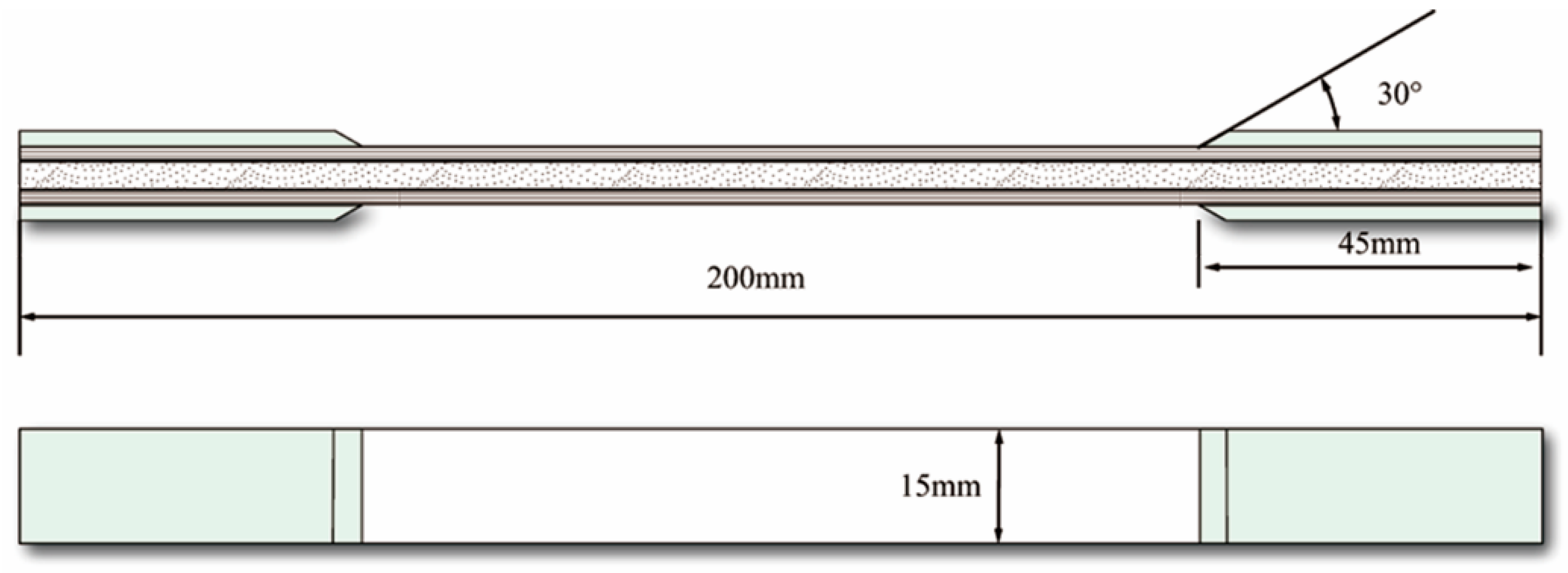
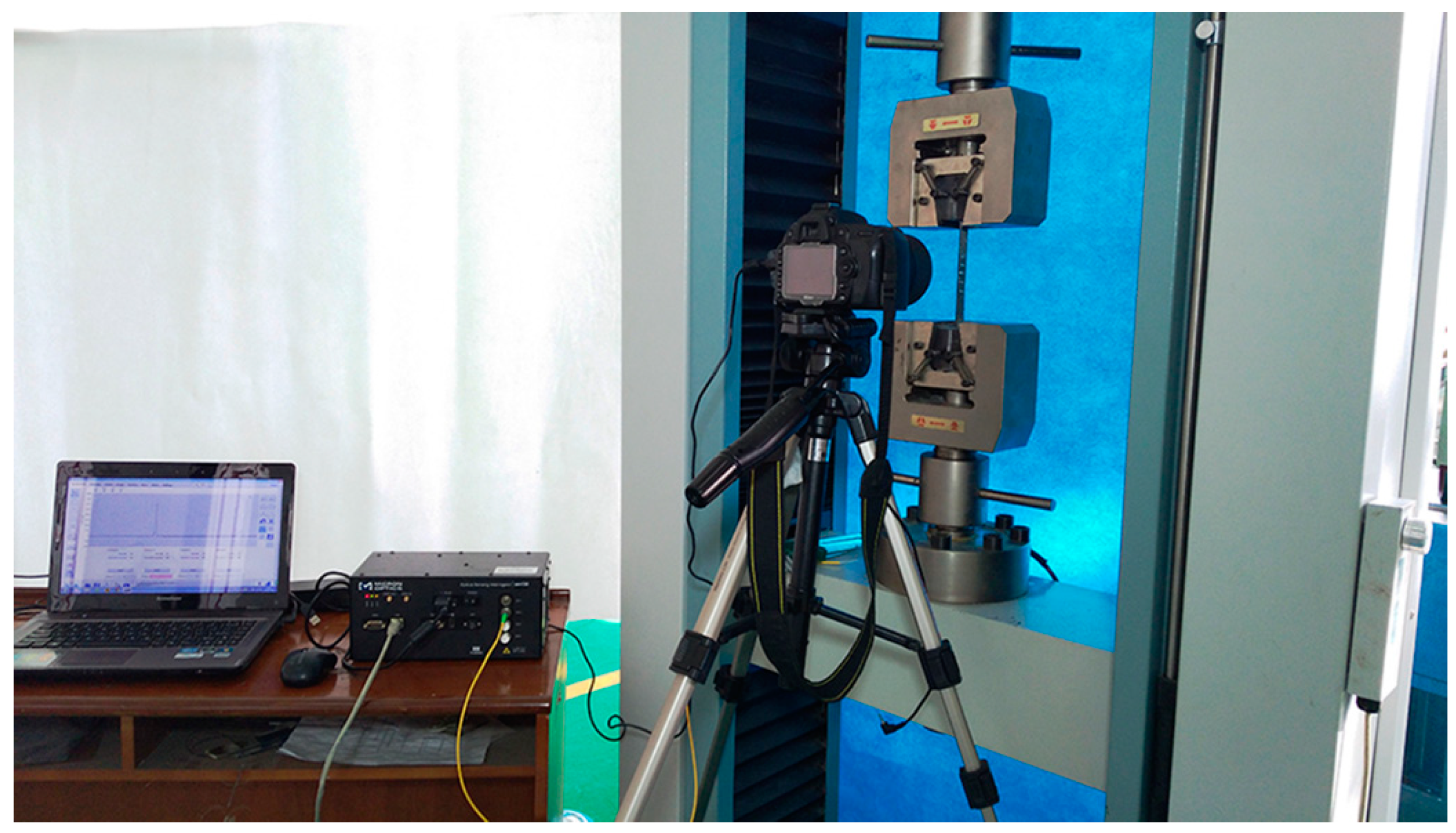

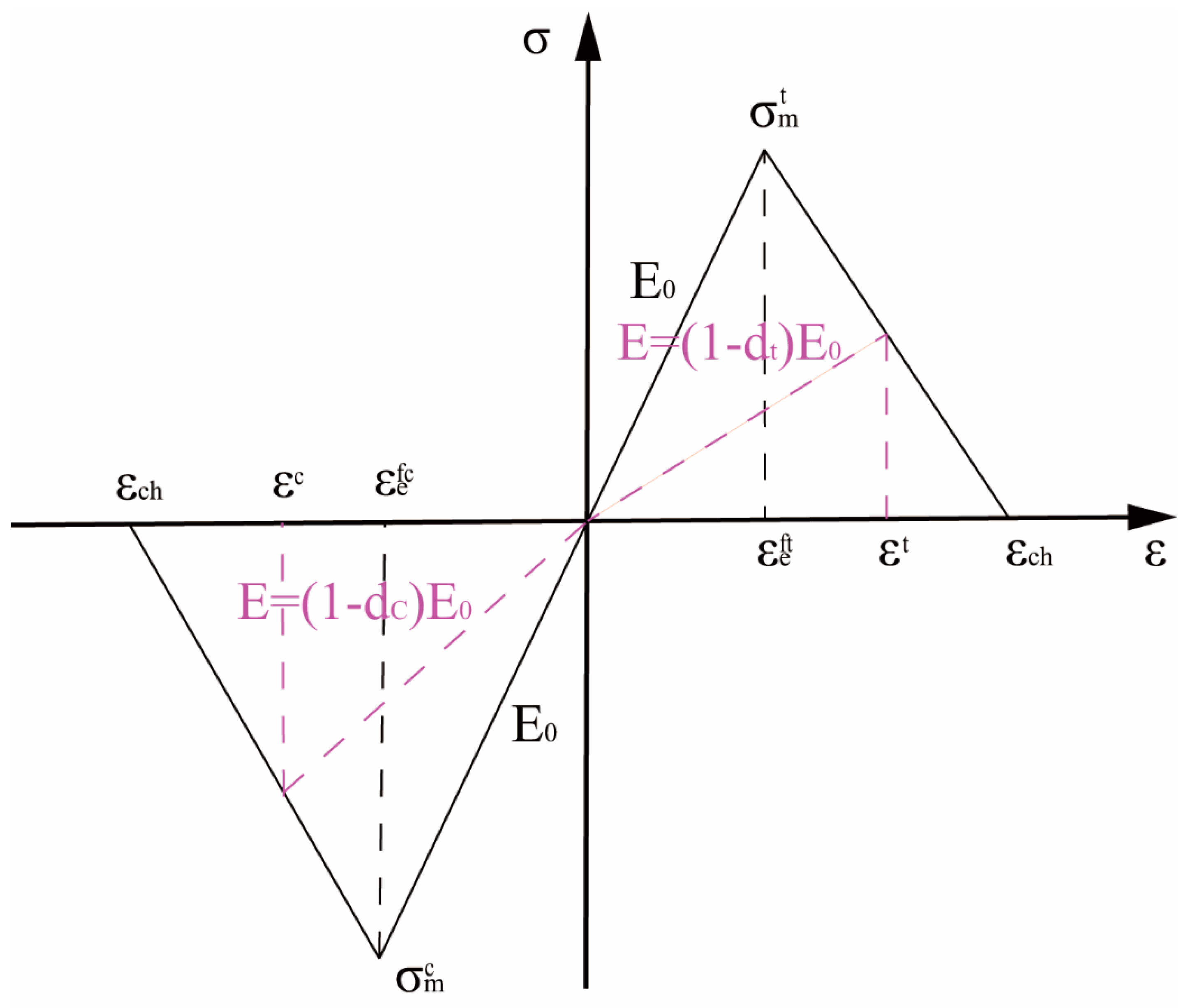
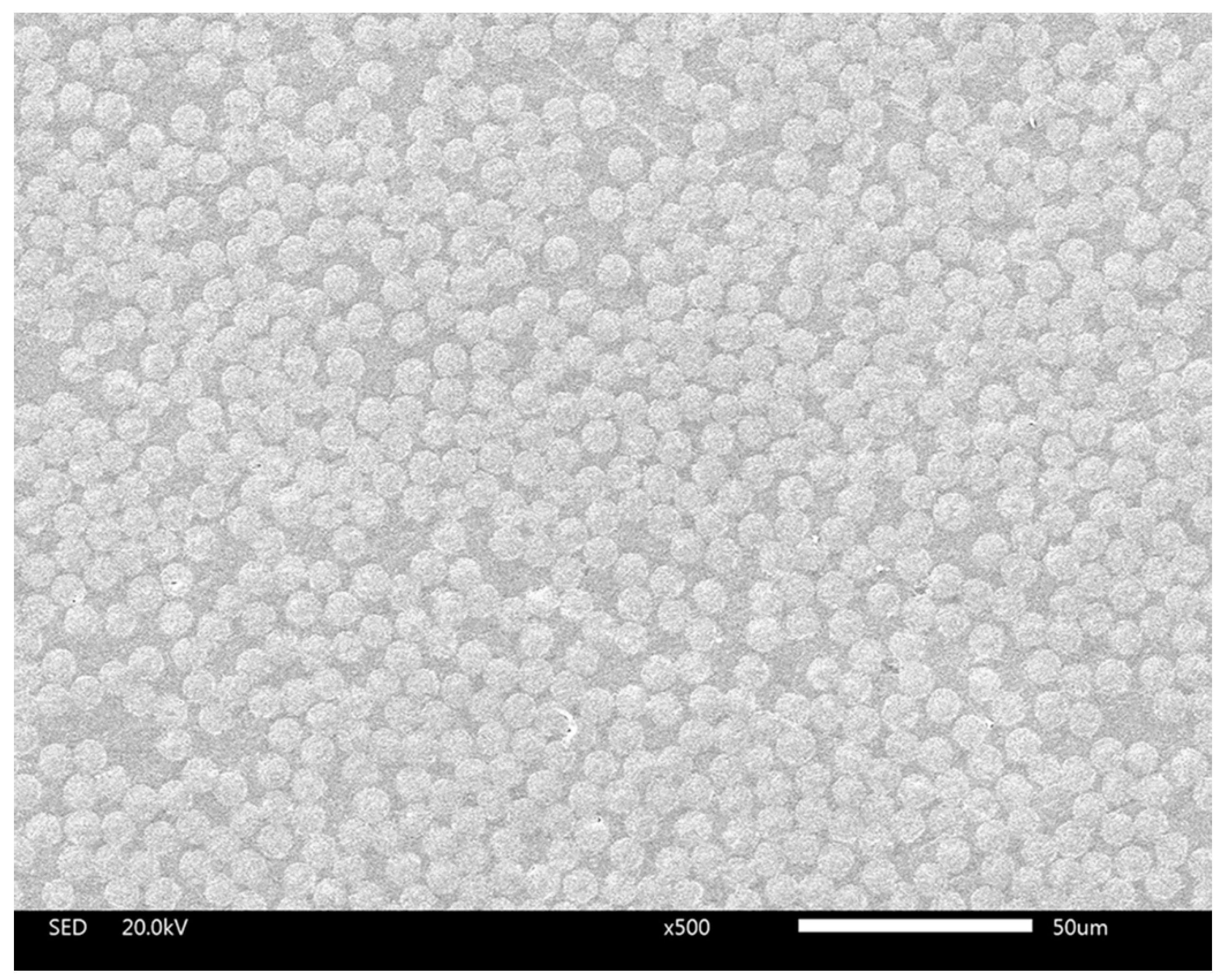
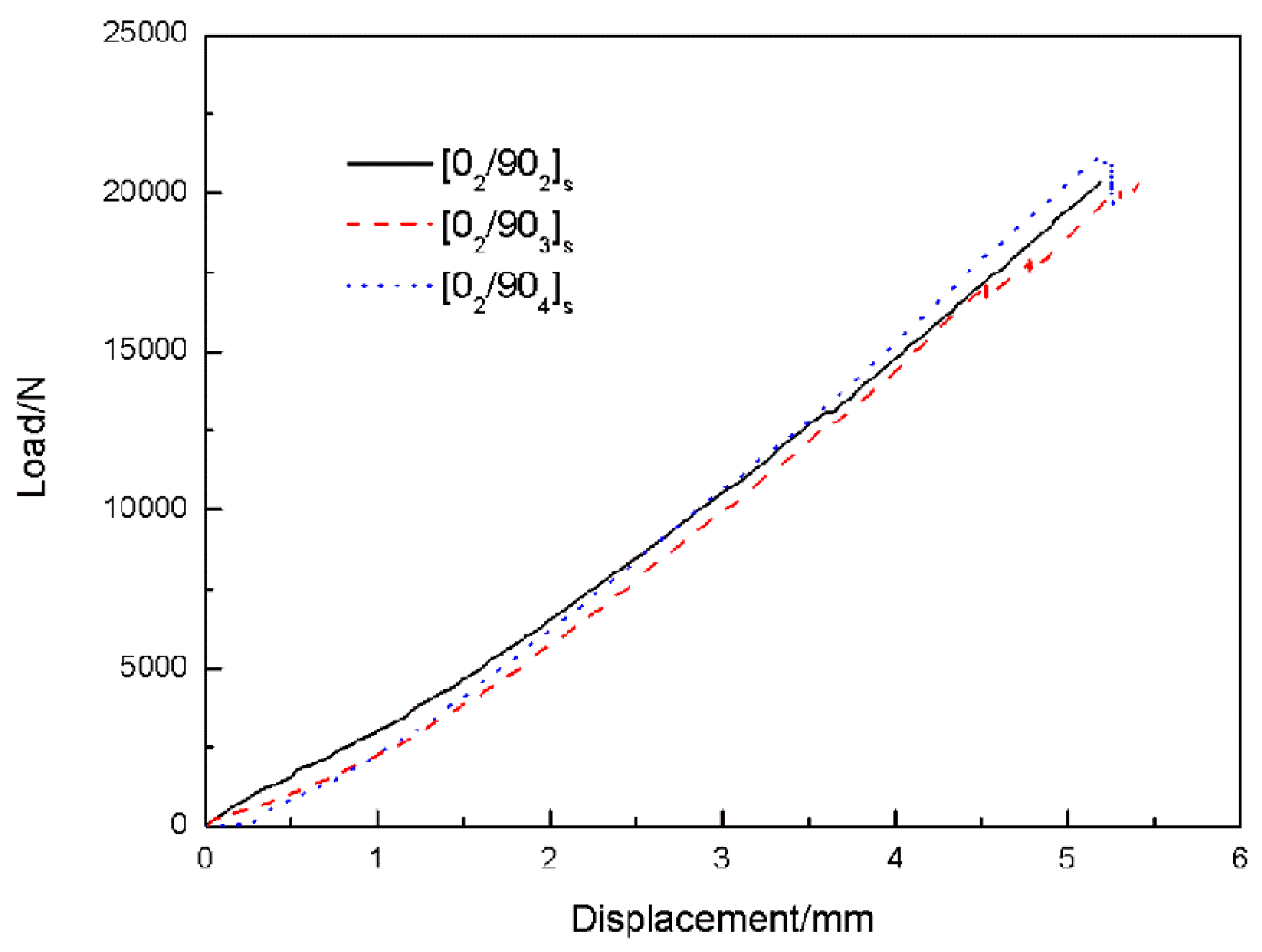

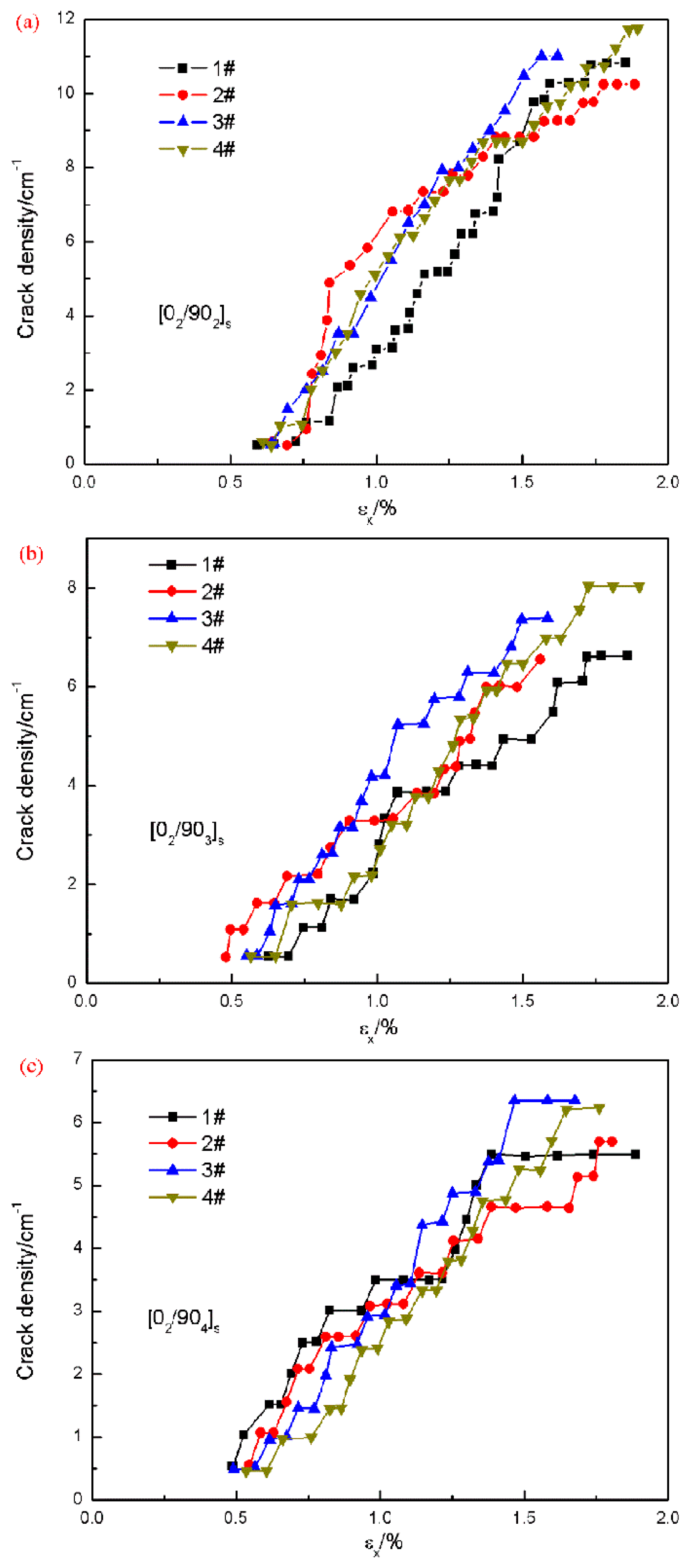
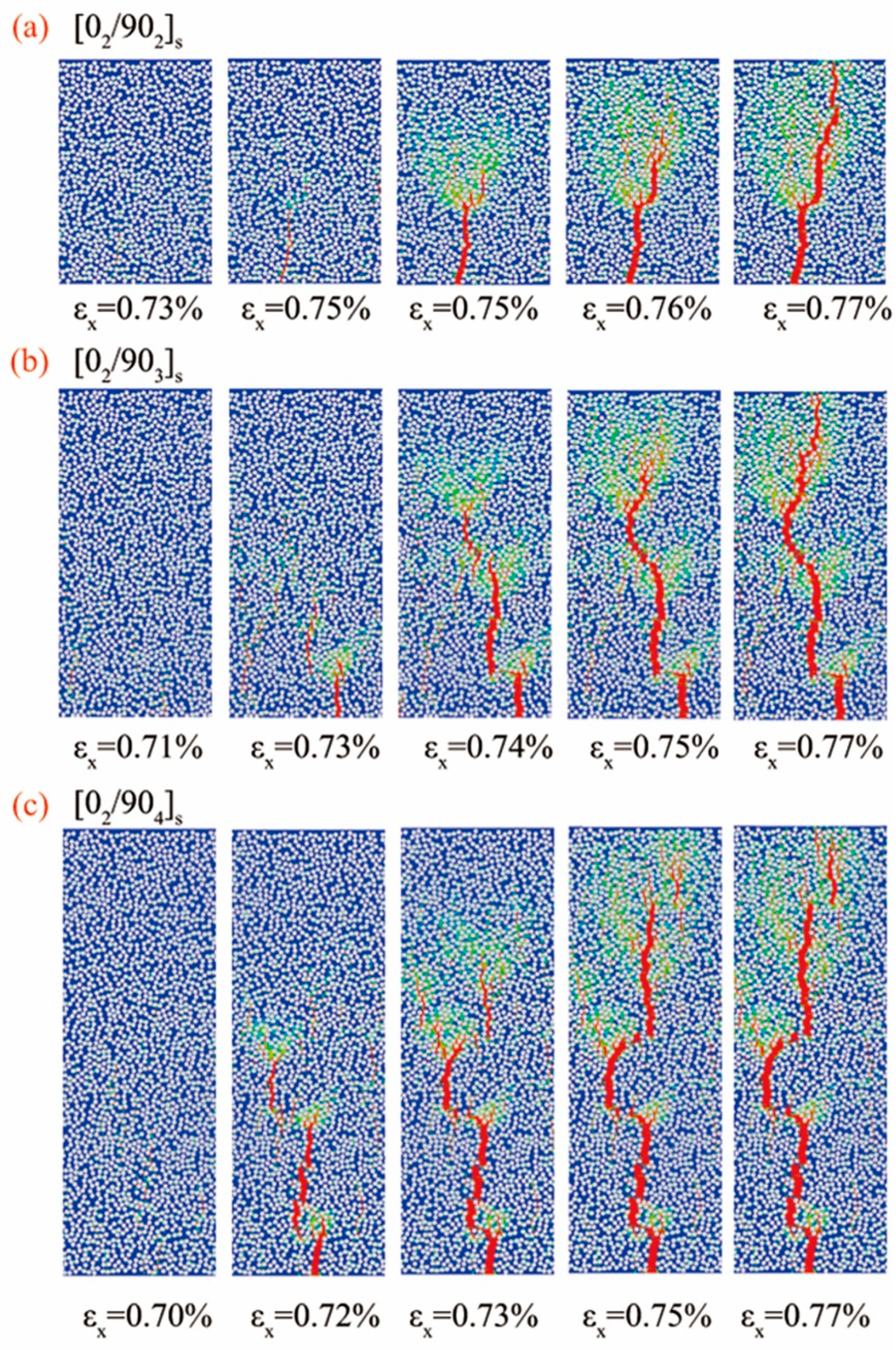
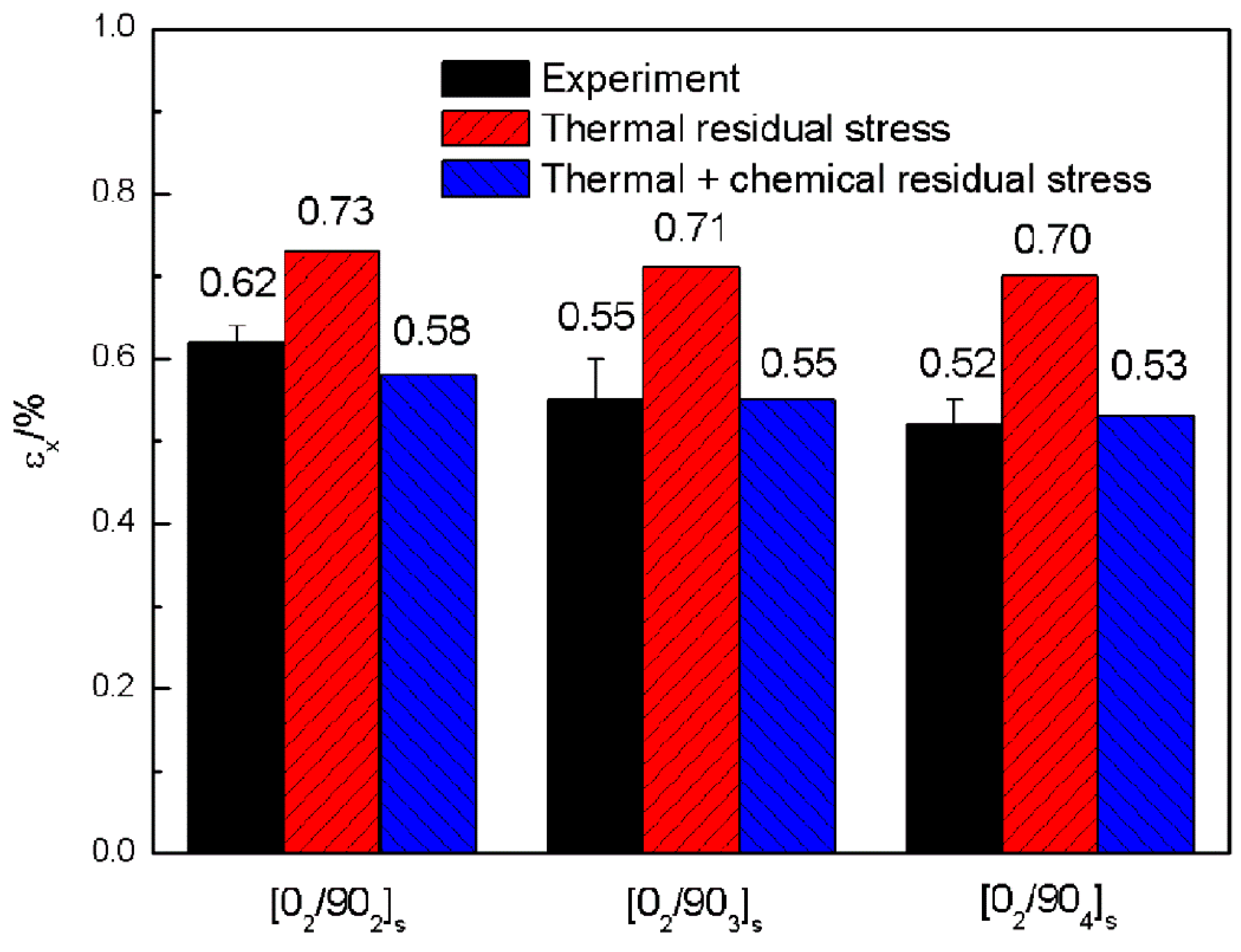
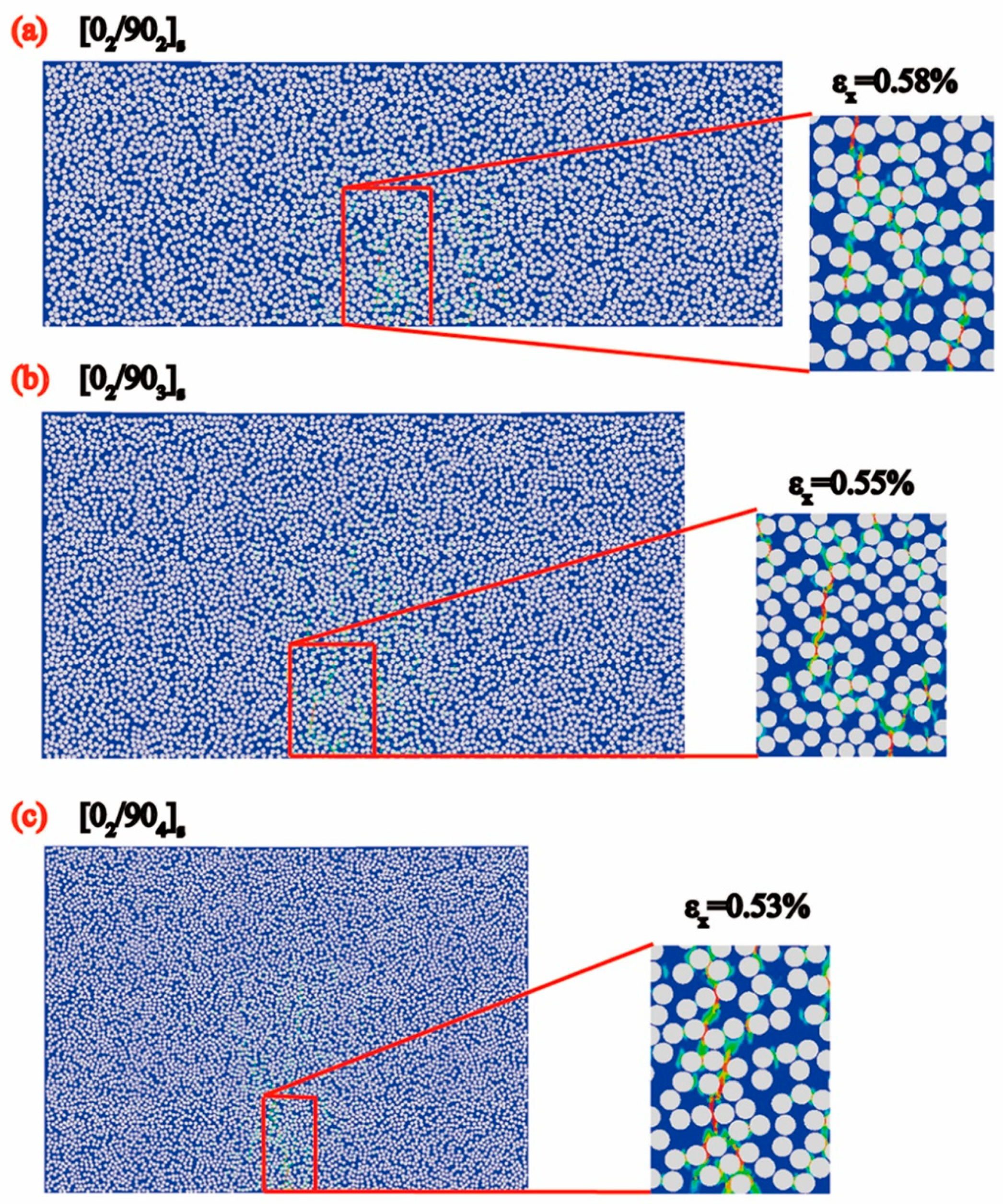
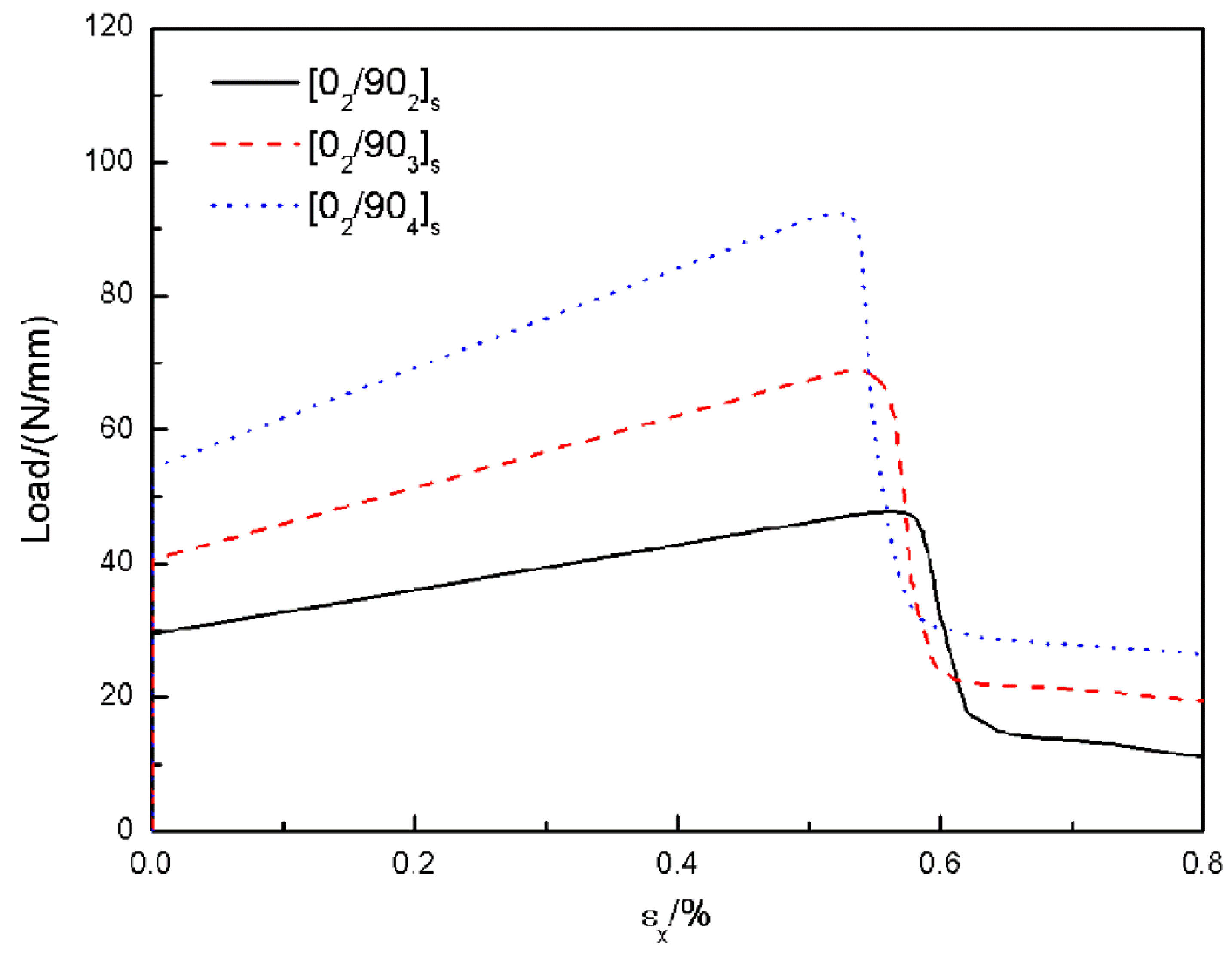
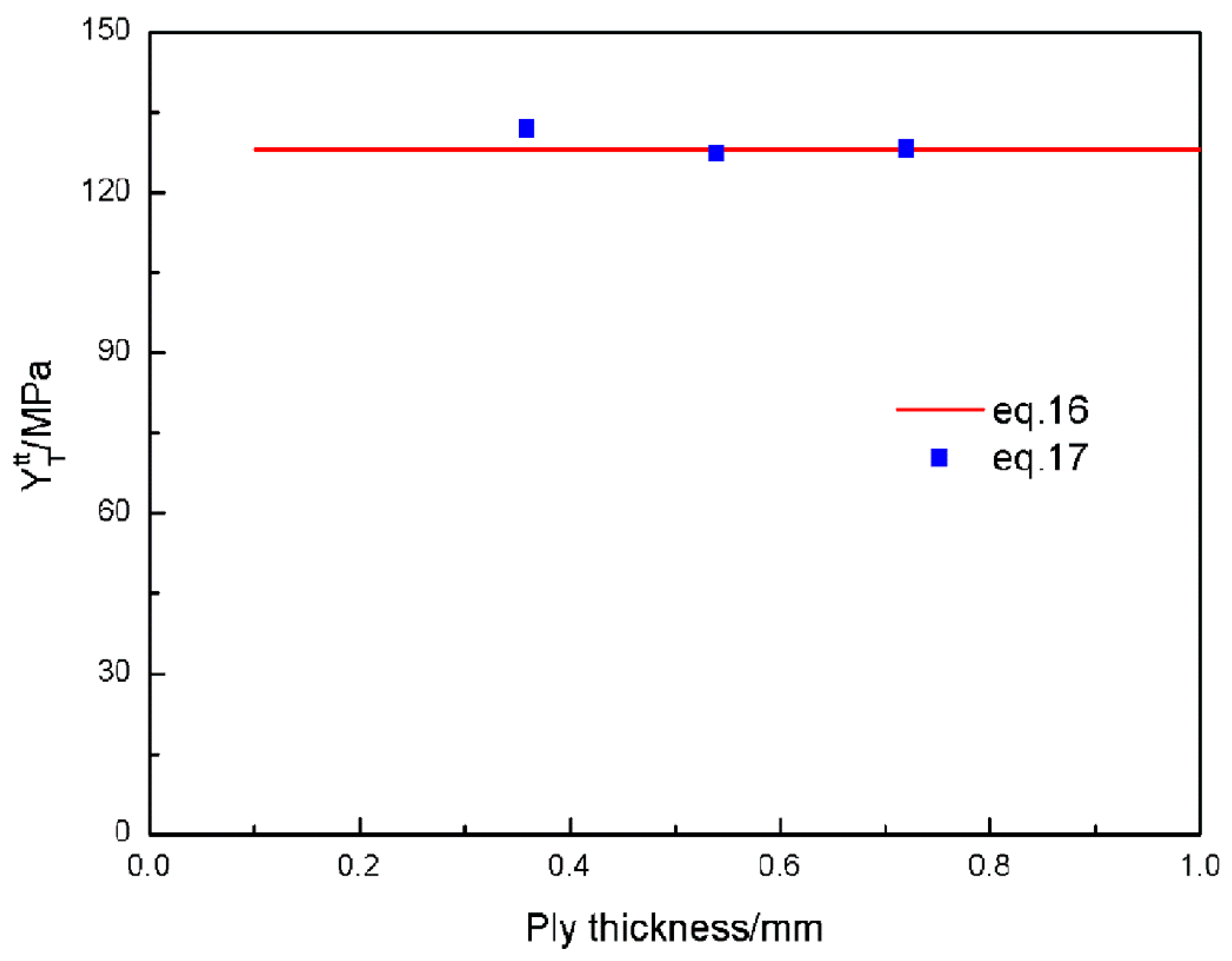
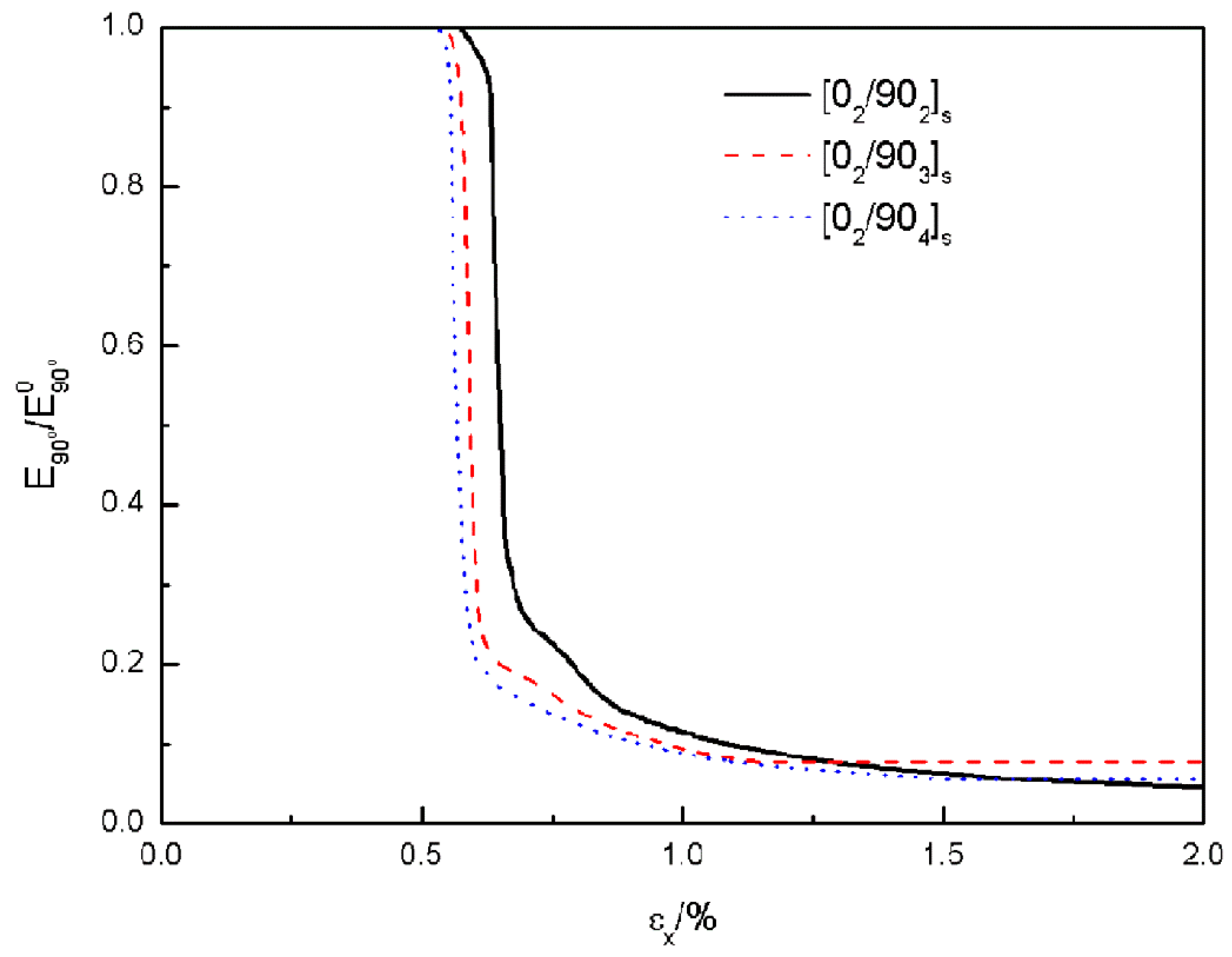
| Longitudinal Young’s Modulus E1/GPa | Transverse Young’s Modulus E2/GPa | In-plane Poisson’s Ratio ν12 | In-plane Shear Modulus G12/GPa | Longitudinal Coefficient of Thermal Expansion α1/(10−6K−1) | Transverse Coefficient of Thermal Expansion α2/(10−6K−1) |
|---|---|---|---|---|---|
| 141 | 9.2 | 0.32 | 4.8 | −0.34 | 34.4 |
| Modulus Em/GPa | Poisso-n’s Ratio νm | Coefficient of Thermal Expansion α/(10−6K−1) | Tensile Strength σtm/MPa | Compre-ssive Strength σcm/MPa | Shear Strength σsm/MPa | Critical Fracture Energy Release Rate Gm/(J/m2) |
|---|---|---|---|---|---|---|
| 5.1 | 0.35 | 52 | 121 | 176 | 50 | 90 |
| Failure Mode | |||
|---|---|---|---|
| Tension in 1-drection () | |||
| Compression in 1-drection () | |||
| Tension in 2-drection () | |||
| Compression in 2-drection () |
© 2019 by the authors. Licensee MDPI, Basel, Switzerland. This article is an open access article distributed under the terms and conditions of the Creative Commons Attribution (CC BY) license (http://creativecommons.org/licenses/by/4.0/).
Share and Cite
Sun, L.; Wang, J.; Hu, H.; Ni, A. A Simplified Computational Strategy Focused on Resin Damage to Study Matrix Cracking of The Cross-Ply Laminates Under Uniaxial Tension Load. Materials 2019, 12, 1984. https://doi.org/10.3390/ma12121984
Sun L, Wang J, Hu H, Ni A. A Simplified Computational Strategy Focused on Resin Damage to Study Matrix Cracking of The Cross-Ply Laminates Under Uniaxial Tension Load. Materials. 2019; 12(12):1984. https://doi.org/10.3390/ma12121984
Chicago/Turabian StyleSun, Liangliang, Jihui Wang, Haixiao Hu, and Aiqing Ni. 2019. "A Simplified Computational Strategy Focused on Resin Damage to Study Matrix Cracking of The Cross-Ply Laminates Under Uniaxial Tension Load" Materials 12, no. 12: 1984. https://doi.org/10.3390/ma12121984
APA StyleSun, L., Wang, J., Hu, H., & Ni, A. (2019). A Simplified Computational Strategy Focused on Resin Damage to Study Matrix Cracking of The Cross-Ply Laminates Under Uniaxial Tension Load. Materials, 12(12), 1984. https://doi.org/10.3390/ma12121984






